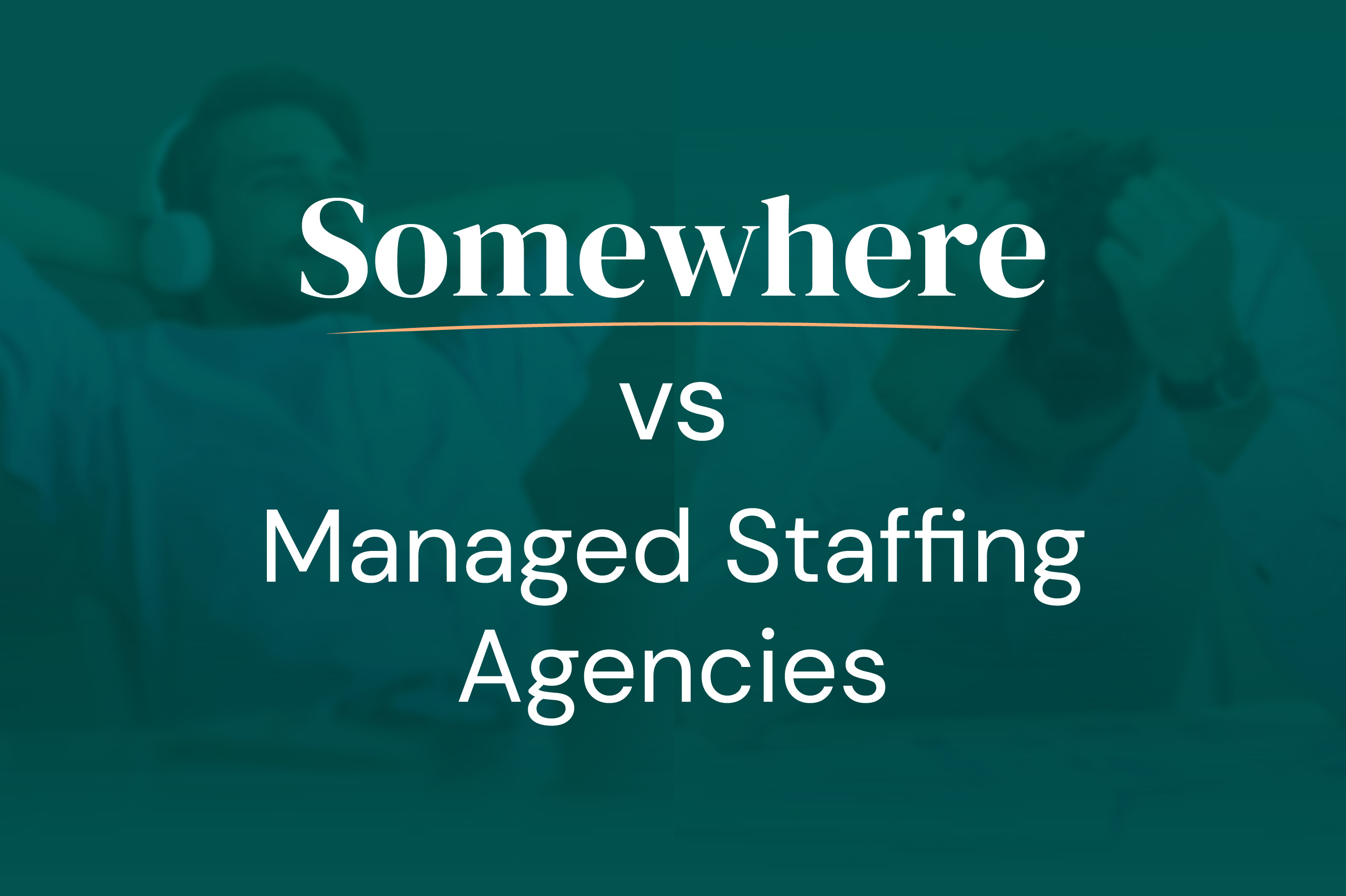Setting aside time out of the grind to give feedback strengthens camaraderie and ultimately quality of work. But they can also be tricky to navigate.
When HR experts crafted different performance evaluation methods, they probably didn't anticipate this work-from-home shift.
Even now, there is very little advice on how to adapt performance appraisals to our new reality. But as with everything else, business leaders can take this opportunity to build stronger teams and innovate better ways to evaluate staff.
Whether you're looking to conduct an end-of-year performance review or want to deliver feedback for the first time, this article will provide actionable tips on the right way to evaluate your virtual assistants.
Why it's important to evaluate your VAs performance

Evaluations are how VAs improve their performance
“The best way to disengage employees is to give no feedback,” shares leadership coach Rebecca Aced-Molina.
“Negative feedback is better than no feedback. Employees would rather engage with negative feedback than be ignored.”
Everyone wants to be acknowledged for their work. And in a remote setup, direct feedback from a manager can have twice a positive impact. Without evaluation, VAs will always be guessing how they're performing.
If you're uncomfortable giving feedback, you can rest easy; constructive criticism is better than total radio silence. It shows you care! Your assistants will appreciate the time you took to notice their work.
It’s a great way to objectively give feedback
Struggling to find the right time to give feedback? Maybe you've been itching to correct their performance, or maybe want to show your appreciation with the right timing. In the performance review, there's no guesswork.
Whatever the news, your VAs will be in the right headspace for feedback. This is important! You want to be on the same page for whatever happens next: a raise, a shift in scope, or something else.
Even better, VAs will most likely come prepared with suggestions of their own. Whether they have ideas for improving the business or ways they'd like to be supported by you as their manager, it's a win-win for everyone involved.
You can use it as a basis for rewards or disciplinary actions
Often, performance evaluations kickstart other steps for your assistant's growth. Whether those are rewards (a raise, a new title), disciplinary actions (putting a VA in a PIP plan, or the difficult task of letting them go), you won't have to second-guess yourself.
At the end of the day, the data you'll have gathered will give you a 360 view of their performance, backing up any decision you make.
Unique challenges of evaluating staff remotely

The new hybrid setup has changed the game for managers—but have they made evaluations easier? Not necessarily. There are several reasons why evaluating remote staff is a little more challenging:
1. Nobody likes them—not even managers
Let's face it—nobody wants to be the bearer of bad news. We want our teams to be inspired and motivated. It's intimidating to consider the possibility of our feedback hurting team rapport.
It gets trickier with the unique challenges of a pandemic. Are our staff struggling with isolation? How are their families? Are they really okay, like they say they are, when there's only so much we can glean from a small Zoom screen?
Not to mention, performance evaluations are time-consuming. You have to gather data, prepare performance review questions, plan your mode of attack. When it's done, you have to prepare your action plan. This is all work managers have to do—on top of their current workload.
2. Your teammates may not be at their best
With the persistent global headwinds affecting us all, it's safe to presume your assistants aren't performing at their best — even your top performers. How can we give direct, objective feedback while still being compassionate? It's a tightrope managers will soon have to learn to walk.
3. There’s no one template for evaluating staff remotely
Despite all our breakthroughs in navigating remote work, there is still no one-size-fits-all way to evaluate staff. While we have successful case studies to learn from, the answer to "will these methods work in my team?" still depends on a lot of unique factors.
4. You need to adjust your approach with VAs from the Philippines
You probably know this already from firsthand experience, but it bears repeating—communicating with Philippine VAs can be a little bit different.
Like in many Asian countries, Filipinos have a high-context culture. Some things you may notice:
- They find directness uncomfortable, even rude
- They may hesitate to state their real opinions
- They may have non-committal responses like "We'll see" or "I'll do my best" when they really mean "No"
If you're used to dishing out some tough love during evaluations, you might have to reconsider your approach. Your message may not fully land the same way if you aren't aware of these nuances.
How to evaluate your assistant's performance

Here are 7 ways to evaluate your VAs the right way, even in a remote setup.
1. Know what you’re measuring against
To start, ask yourself: what are the standards?
A performance evaluation needs baselines to be measured against, and you don't want to be giving feedback just off gut feelings alone, which is suspect to bias.
Think about what expectations you have for your VA. What OKRs have you set? What criteria are the most important?
Ideally, these are standards you've communicated with your VA in the beginning. They know these by heart, and there shouldn't be any surprises during their evaluation.
When in doubt, you can always revisit what you wrote in the job description. A winning job description is invaluable in helping you outline your performance evaluation questions and forms.
2. Decide what performance evaluation method is right for you
There's no shortage of performance review methods you can try out. "Which one should I use?" The answer, again: it depends. There's no one way to do it, and this can be a good thing. You can test out methods, see what works, and tweak things from there.
Whether you have hundreds of staff or manage a smaller, tight-knit group, here are some examples to take inspiration from:
Graphics Rating Scale
For something simple and old-school. The graphics rating scale is a linear scale—usually from 1 to 5—that you can use to rate your VA's performance. With your set of questions or behaviors, you can determine how well your assistant performed by adding up the ratings for each. A full 5 means they did excellently, while a rating of 1 might mean they need improvement.

Trait-Focused Method
If soft skills are your priority in your assistants, this method will work best for you. Instead of objectives or tasks, the questions you'll prepare for this method measure traits like punctuality, helpfulness, creativity, and more. Usually seen in customer service departments, this method usually uses a checklist.
Checklist Scale
Another simple but elegant method. Here, you use a checklist for attributes you expect your VA to have. The number will depend on you. As the evaluator, you only need to prepare a series of questions and answer Yes or No. Another variation is to add criteria under each question (such as Poor, Average, Excellent, for example), and check the boxes that work.

Self-Evaluation
Instead of doing the evaluation completely yourself, why not let your staff have the opportunity to evaluate themselves? There are many reasons why this can be helpful. For one, it helps your assistant feel more engaged in their own development.
Second, it opens a two-way street for communication. Ask them questions to further understand their self-evaluation. Things like, “Why did you rate yourself so high on this particular criteria?” or "How did you understand this OKR?".
Finally, this method makes the next steps easier to execute, since both of you are more likely on the same page. Someone who’s given themselves a low rating, for instance, will get why you’re giving them more training (or perhaps laying them off).
Whichever method you choose, here's a quick reminder that preparation takes time. Even the most simple of methods will require you to have gathered enough data (and not just the past two weeks!). This brings us to the next point:
3. Decide your evaluation timeframe
Will you evaluate your VAs evaluated monthly, quarterly, or annually? How often you do this will determine how much prep you need to do.
An end-of-year performance review, for instance, usually takes at least an hour or two. And as they happen only once a year, they're often followed by big decisions (like a raise or a layoff).
A monthly review, on the other hand, will take you less time to prepare. However, it requires more consistency on your part.
Regardless of what timeframe you pick, everyone involved must agree to show up fully for all these sessions, for best results.
4. Always be evaluating
No matter how great your memory is, it’s ideal to plan for gathering data so you're not scrambling to prepare each time you have a performance review.
How?
Get into the habit of giving feedback regularly.
You don’t need to schedule 1-on-1s every other week to do so. If you see something your VA did well, point it out! Celebrate it. See something you don’t like so much? Send them a quick voice message and explain why. Don’t wait until the annual end-of-year review to give them feedback that can improve their work today.
Sometimes, business leaders just need to remind their staff of the standards. Mentioning expectations early—and often—will leave no room for confusion. Every touchpoint can be a way to communicate with kindness and motivate your staff to perform the best they can.
Do this right, and none of your VAs will be surprised by your feedback and will thank you for your consistency.
5. Learn from schools' simple pass/fail system

Mindful of the challenges of remote learning, plenty of schools temporarily suspended numerical grades. Instead, they opted for a simple system where students either passed or failed. While this was unheard of, it was the most compassionate thing to do.
Managers can do the same thing.
Consider building your performance evaluation forms in a way that takes into account the full lived experiences of your staff.
Try looking beyond the surface:
- What are other ways of determining success?
- Was your VA able to complete all assignments despite juggling school or caring for a child?
- Did they struggle with punctuality for a time because a typhoon rendered all work impossible for weeks?
- Were they able to deliver high-quality work despite challenges?
This is information you can only get by asking. Make room for these non-work discussions in your 1-on-1s. Soon, you’ll have a better picture of the situation and be able to evaluate staff from a place of compassion and objectivity.
6. Watch out for hidden biases
Studies have shown that, despite good intentions, most evaluators are prone to bias. Mostly, when criteria are unclear, people tend to look at a person’s gender, race, age, and other stereotypes to give feedback.
What this looks like can be different for every evaluator. For some, it manifests in unclear, vague feedback. Other times, it looks like unwarranted praise. All of them can be hurtful. As a manager or employer, it’s up to you to make sure your feedback is always objective and bias-free.
How? According to HBR, here are three things you can do to keep your biases in check:
Create a rubric for evaluations
“By first creating a rubric, then filling in the open box with your assessment and feedback, you will be less prone to be influenced by your gut reactions,” shares Mackenzie, Wehner, and Correll of HBR. “Research shows that when you first agree to the criteria used in the assessment and then you make the evaluation, you are less likely to rely on stereotypes and your assessments are less biased.”
Create better prompts
Bias creeps in when we don’t hold the same standards for all our employees. The simple fix? Create clearer, more specific, and more measurable prompts for your evaluation questions.
Instead of “What do you like about this assistant?” you can tweak it to something like, “What are the ways that this assistant contributes to your business goals?” These small tweaks make all the difference!
Run a consistency check
We’re all prone to the recency effect—where we can better recall recent instances more vividly and accurately. To stay consistent, it’s a good idea to revisit data you’ve collected throughout different situations.
If you’re running an end-of-year performance appraisal, for example, don’t just review what happened in the last three months. Keep a record somewhere you can reference easily.
For example, you can keep a running doc containing all of the topics and talking points you’ve discussed during 1:1 check-in calls. You and your assistant can also keep a dashboard with their biggest milestones or achievements.
7. Create a safe space
When doing remote performance evaluations, you’ll have fewer context clues to draw from. Zoom fatigue can set in, you can have connectivity problems, plus a host of other things vying for your attention, keeping you from settling into the right headspace. In these situations, it’s important to foster patience to reach through the digital void, so to speak.
For leaders, this means safeguarding your evaluation environments. Keep a warm and humane tone. Show presence, keep your video open, and watch your employee’s body language closely. Reiterate that the goal of the session is for their growth as well, and make sure they understand that questions are welcome.
Performance evaluations are tough for everyone involved; active listening goes a long way in making it enjoyable for everyone.

What to do when your VA doesn’t meet expectations
Just because your VA hasn’t met your expectations doesn’t mean it’s time to let them go. Here’s what you can do if you want to keep them on board:
Offer resources or support
If you’ve decided you want your VA to stick around, make sure you’re ready to offer the support they need to achieve your goals together. Most times, your assistant will be ready to take on the challenge — they just need a little extra hand.
Have a chat and ask what they need. Is it less micro-managing? Perhaps more paid classes or training? Investing in your employees this way will pay off for your business years in the future.
Put them on a performance improvement plan
Sometimes, offering a “grace period” to improve or get used to certain expectations is all your assistant needs. Consider creating a performance improvement plan (or PIP for short), to help them get back on track.
Here’s how you can design your PIP plan:
- Define what success looks like with your assistant
- Translate success into specific, clear, and measurable goals
- Share your own support plan for your VA (this can be more 1-on-1 calls, more training, etc)
- Clarify outcomes (both rewards and consequences)
A PIP plan doesn’t go on forever. Make sure you agree with the timelines but remain flexible if needed.
Make the most out of employee evaluations
How we conduct our performance reviews has changed, but our goals remain the same. At the end of the day, we all want to succeed. And our business's success depends on how well we can empower everyone in our team to do their job.
A great team starts with great hires, and it can be challenging to find the right remote staff for your team. That's where we come in. Contact us today to get started on finding your next best hire.
FAQs on remote employee performance evaluations











.jpeg)
.webp)

